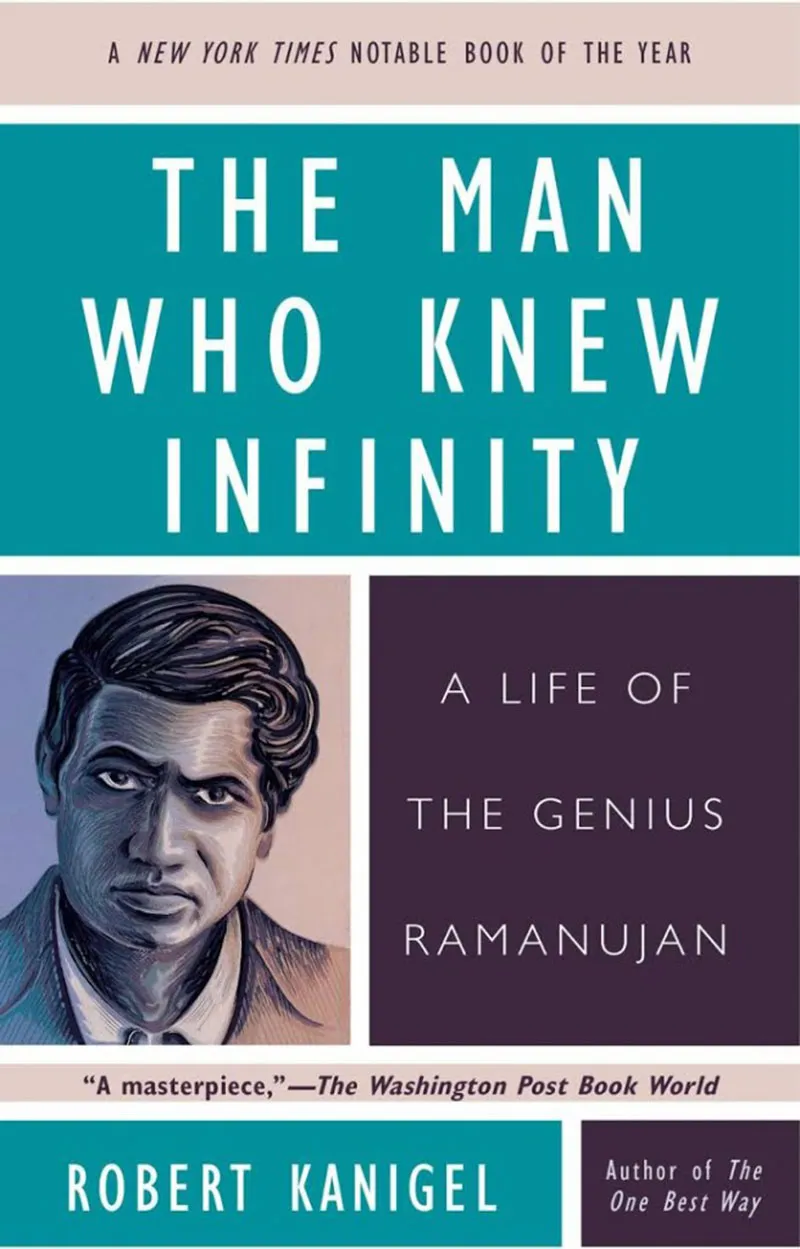What you did not know about Ramanujan, the man who knew infinity
It is quite intriguing that many a great life is remembered in conjunction with extremely short expressions.
For instance, when you think of Einstein, it is difficult not to think of the equation E = mc2. When you see a bitten apple, you think of Steve Jobs (or Alan Turing, depending on what you know of this computer scientist). When you hear “You too?” you think of either the bard (the bard, mind you) or the ruler he wrote about.
If you are into mathematics, you would have heard of 1729. It’s the Ramanujan number.
This number, or rather the beauty of the number, was expounded by Srinivasa Ramanujan Iyengar, considered by many as one of the greatest mathematicians of all times and certainly India’s greatest in centuries. Though 1729 is not exactly the mathematician’s most important contribution, it certainly is one of the most enduring in public memory.
Simply put, 1729 is the smallest number that can be expressed as the sum of two different cubes in two different ways. (A cube of a number is the number multiplied by itself three times over. So in 2 times 2 times 2 equal 8, you find the cube of 2 is 8.) 1729 is the sum of the cubes of 10 and 9 (1000 and 729 respectively) as well as the sum of the cubes of 12 and 1 (1728 and 1 respectively).
As his mentor Professor G. H. Hardy, a celebrated mathematician himself who considered his own life’s greatest contribution to mathematics as the discovery of Ramanujan, put it, numbers were “personal friends of Ramanujan.”
Sounds very believable, considering that Ramanujan explained the beauty of 1729 when Hardy was visiting an ill Ramanujan. Here’s the anecdote as it appears in Robert Kanigel’s 1991 book, The Man who knew Infinity: A Life of the Genius Ramanujan.
Once, in the taxi from London, Hardy (while visiting an ailing Ramanujan) noticed its number, 1729. …(as Hardy) entered the room where Ramanujan lay in a bed and declared…1729 was rather a dull number. “No, Hardy,” said Ramanujan. “It is a very interesting number…”
Kanigel did a wonderful job in telling us almost everything we wanted to know about the man Ramanujan. Beyond the captivating narrative, it is very detailed in its research. The research couldn’t have been easy by any standards -- Ramanujan died 96 years ago this day (well, almost. He died on April 26, 1920).
A life in numbers

Directed by Mathew Brown the biopic, The Man who knew Infinity, releases today. It stars Dev Patel in the lead role. (If the teasers on youtube are any indicators, the movie seems to be a little over the top, but one had better not comment so early.)
April was declared as the Mathematics Awareness month, and the film comes at the right time to bring into focus a subject that is revered and feared in equal measures.
Ramanujan, once a clerk at Port Trust Office at Madras (now Chennai), didn’t have enough papers to write the enormous amount of theorems and equations he came up with. The son of an extremely religious mother, whose strict persona almost overshadowed his genius, Ramanujan spent his childhood in Kumbakonam. His formal education did not exceed matriculation (though back then, it wasn’t that bad), but each of his equations and theorems continue to confound and charm post-doctorates students alike the world over even today.
You do know what’s a theorem, don’t you? Those ghastly little statements that appear as commandments in high-school geometry textbooks. You also remember a theorem needs a proof, right?
The astounding part of the mathematical side of Ramanujan’s story is that he didn’t know what a proof was.
A theorem isn’t a theorem unless it carries a solid, fail-proof, fool-proof proof. A theorem can’t be accepted as a theorem unless it has a proof. Even if the proof takes centuries – literally. (Google for Fermat’s Last theorem.) No wonder it drove Hardy crazy to know that Ramanujan, one of the greatest mathematicians ever, had no idea what a proof was.
If Ramanujan didn’t know what a proof was, evidently there was no way he knew his theorems were correct. Then how did he know about the theorems in the first place? Hardy suggested Ramanujan’s theorems were a result of “a curious mix of induction and intuition.”
Ramanujan himself wasn’t so sure.
According to him, the theorems mostly occurred to him. Not unlike Coleridge composing Kubla Khan in an opium-induced stupor, except that Ramanujan wasn’t under the effect of drugs. Practically everything that he produced in mathematics, it was by the blessings of the family goddess Namagiri (a form of Goddess Lakshmi) of Namakkal. They just happened, almost appearing in front of him at the command of the deity.
An extraordinary gift
Ramanujan’s extremely religious mother firmly believed Ramanujan himself was the goddess’ gift to her. Ramanujan, hardboiled in the Tambrahm traditions of the day, was rigorously religious, cooking his own meal and all that during his entire stay in England.

While Ramanujan’s contribution to mathematics transcends sub-topics, his first love was numbers. Whether it is the explanation of the beauty of how any number multiplied by 9 produces a result whose digits, when added till the end, will result in a 9 (remember the math teacher explaining this in Stanley ka Dabba) to zeta functions to Ramanujan primes (I’m still trying to figure those out), Ramanujan’s love for number is all over.
There’s one more interesting anecdote that involves P C Mahalanobis, the celebrated Bengali who founded the Indian Statistical Institute. Mahalanobis, who later became a great friend of the genius, was visiting Ramanujan. Mahalanobis read an interesting puzzle from Strand magazine that went like this:
…the house of his friend was in a long street, (houses) numbered on this side one, two, three, and so on, and that all the number of one side of him added up exactly the same as all the numbers on the other side of him…. There were more than fifty houses…but not so many as five hundred…
Mahalanobis solved the question in some time, through trial and error. Then he yelled the question itself to Ramanujan, who was stirring vegetables in the kitchen. In a flash, not only did Ramanujan yell back a solution, but also solutions, and also a general method of solving such questions. To say that Mahalanobis was aghast at the scale of the mathematician’s genius would be an understatement.
(Such problems live on. CBSE students of Class X found in their board exams a similar question. Yes, in 2016, as my li’l one reports.)
If there were a hall of fame of mathematicians, it would be difficult to tell where Ramanujan would stand. On the one hand, Hardy accorded him a 100-on-100 score for pure talent. On the other hand, E T Bell, the writer of the celebrated, canonical work Men of Mathematics, didn’t seem to rate Ramanujan high enough and didn’t accord him more than a single line of comparison.
True, there have been great mathematicians before and since, but the very background of Ramanujan, steeped as it is in the lack of intensive formal training in mathematics, makes every judgment about him prone to mistakes.
Ramanujan left behind a rich and an awe-inspiring legacy, to say the least. (Check out Letters from an Indian clerk https://goo.gl/6pJWjt). Till date, his papers and diaries remain a source of joy, discovery, suspense, and great learning to the students and scholars of mathematics even today.
Ramanujan, who was built quite heavily in his youth, often joked that anytime he fought a boy in school, all he had to do was to throw himself on the boy, effectively crushing the opponent. Ramanujan’s work seems to be doing the same today – they carry so much weight.
Related read: Starting up in the time of history: Stories of how three leading brands came to be







